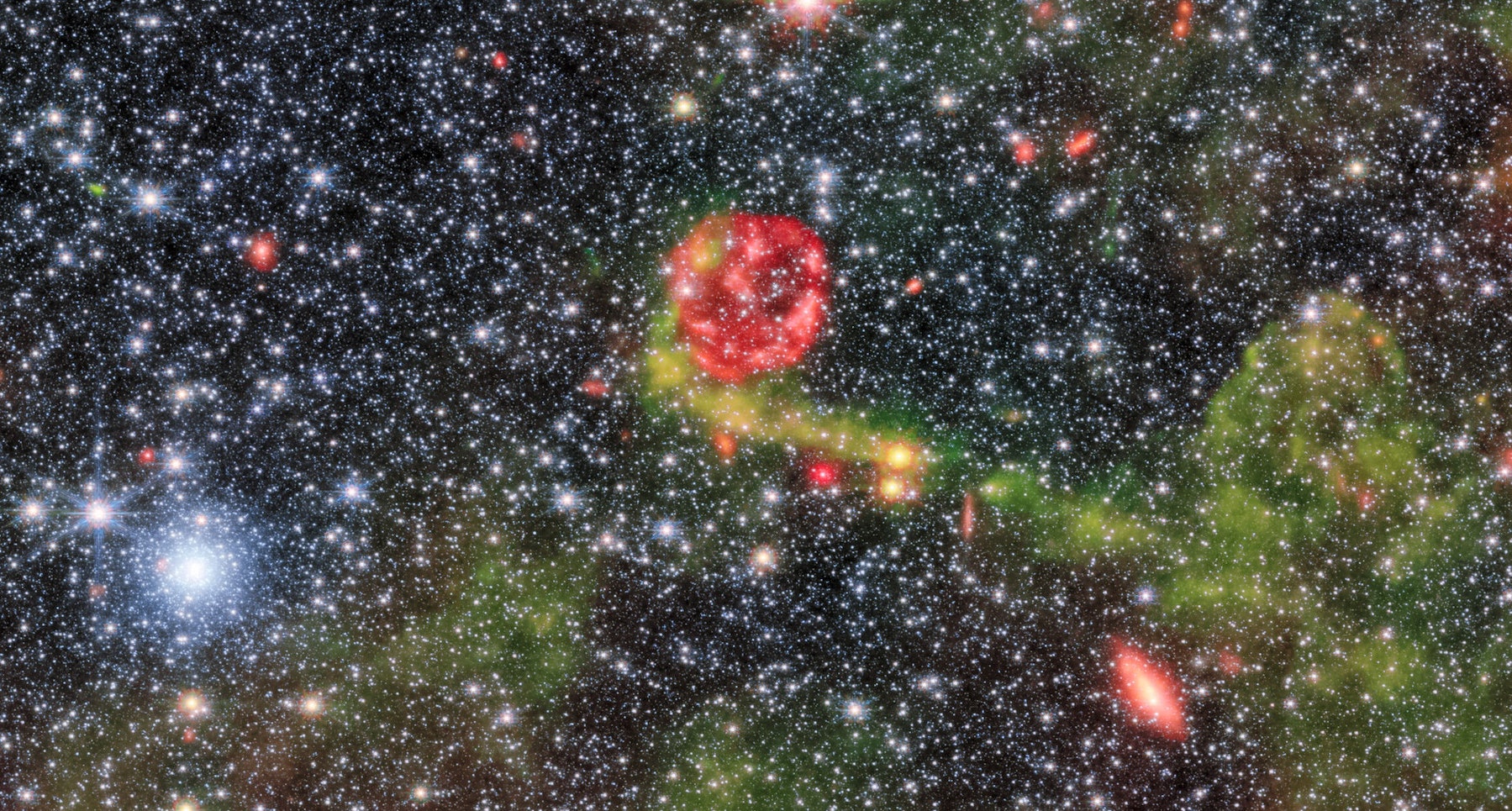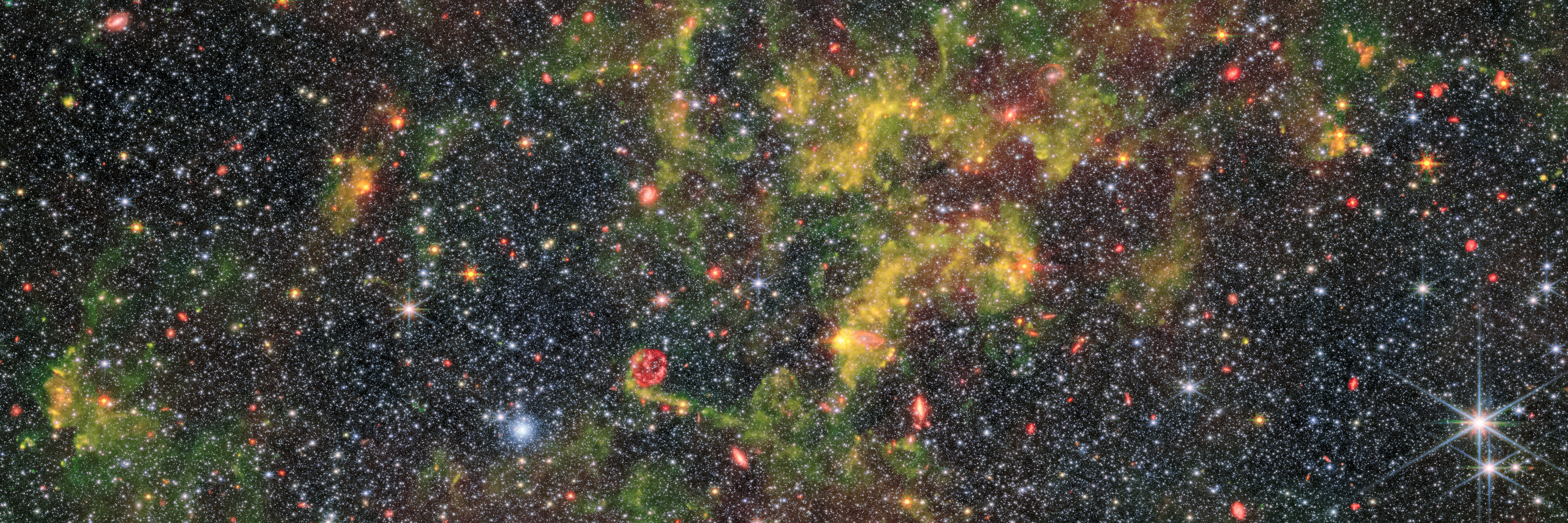
NGC 6822 is full of bright stars and yellow swirls of interstellar gas in this image from JWST.
This messy but gorgeous galaxy may help shed some light on what the earliest galaxies in the universe looked like, long before the first generation of stars had lived and died.

A Cosmic Throwback
Irregular (meaning it doesn’t have a clear elliptical or spiral shape) galaxy NGC 6822 is just 1.5 million light years away, which means JWST’s instrument see the galaxy as it looked fairly recently, by cosmic standards. NGC 6822 isn’t a distant, extremely ancient galaxy; it’s very much part of the modern, recent universe. But like the coelacanth, this galaxy is a modern throwback to a bygone era.
Astronomers recently used two of JWST’s instruments, the Near InfraRed Camera (NIRCam) and the Mid-InfraRed Instrument (MIRI) to study NGC 6822. In the images below, NIRCam focuses on the slightly shorter wavelengths of infrared light emitted by stars, while MIRI captures the slightly longer mid-infrared wavelengths of interstellar gas. Combined, they offer a detailed look at the galaxy.

Most of the material that makes up NGC 6822, from its dense, glittering sea of stars to its clouds of interstellar gas, is made of the two lightest elements in the universe: hydrogen and helium. Astrophysicists say the galaxy has “very low metallicity,” which means that only a small proportion of its makeup is anything heavier than helium. That’s important because elements heavier than helium form in the gargantuan nuclear fusion reactors in the cores of stars, which means those heavy elements only existed in the universe after the first generation of stars had lived, died, and scattered a stellar lifetime’s worth of heavy elements across the universe. Before that, every galaxy in the universe probably looked a lot like NGC 6822.
By studying this strangely low-metallicity galaxy, astronomers hope to learn more about the inner workings of galaxies in the earlier days of the universe, from star formation to the life cycle of interstellar dust.

Nearby NGC 6822 is our nearest galactic neighbor that’s not actually orbiting the Milky Way. Other small galaxies, like the Large Magellanic Cloud and the Small Magellanic Cloud, are closer, but they’re satellites of the Milky Way. NGC 6822, on the other hand, is a little disorganized but definitely independent. In fact, it was the first object that astronomers realized was definitely outside the Milky Way; before that discovery, astronomers argued fiercely over whether there was anything beyond the confines of our own galaxy — and that was only a century ago! This stunning little galaxy helped settle the debate.
Imagine what we’ll know about the universe in another century.







